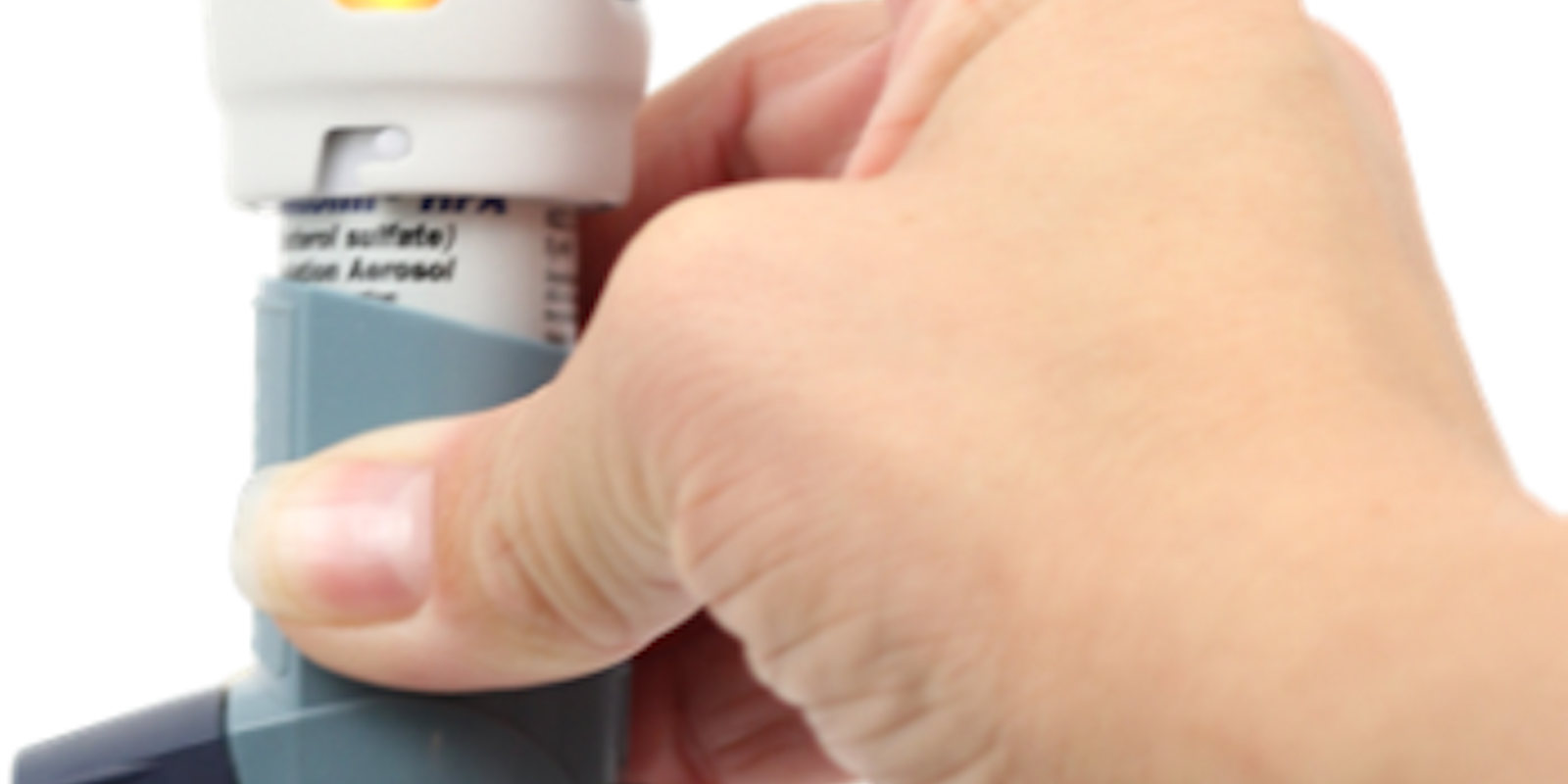We’re probably still a long way from finding a cure for asthma, but a new “smart sensor” that attaches to some inhalers is making it much easier to collect data that could eventually lead to breakthroughs, not only in treatments for individual asthma sufferers but also in identifying possible environmental factors that trigger outbreaks in the first place.
Asthmapolis makes smart sensors that attach to metered-use inhalers and pair with a smartphone via Bluetooth to track the time and location of each inhaler use.
David Van Sickle, Asthmapolis’ co-founder and CEO, developed the first version of the sensor with his partners in 2007; the current model was completed last winter and only got FDA clearance in July. Van Sickle told the Daily Dot that one goal of Asthmapolis’ sensor (which has no official name; Van Sickle merely called it “the sensor”) is to remotely collect individual use information because “a patient’s frequency in using inhalers indicates how well-managed,” and ultimately effective, their treatment is.
While collecting individual patient data helps the individual patient, Van Sickle hopes the aggregated data will ultimately help all asthmatics, not just the sensor users. “It helps the individual, but also provides information for public health and scientific research,” he said. For example, if it turns out that large numbers of patients all find themselves prone to asthma attacks when they’re in a certain neighborhood, that certainly suggests something in that specific neighborhood is triggering the attacks.
Sensor user Eric Corbiere, a 30-year-old steam fireman from Amherst, Mass., has had asthma since he was born. “As long as I can remember I’ve always been that stereotypical kid with asthma like you saw in the movies, with the inhaler,” he said in an email interview with the Dot. “But now I have this neat technology, and my inhaler isn’t just any inhaler anymore. I can show it off to people and when paired with my phone, it’s just really cool looking.”
His doctor had frequently encouraged him to keep track of his inhaler usage. “Every single time I went to the doctor for Asthma related problems, the first thing he would ask was always ‘how many times have you been using your inhaler?’ I would always have to guess, and the tendency with me was to underguess… it’s difficult to remember to log all your usage, as well as always carry a pen and paper.”
The problem with relying on memory for recordkeeping is that inhaler use often becomes one of those automatic actions people do without really thinking about it, similar to how commuters driving a long-familiar route can find themselves at work without remembering all the turns they made to get there.
“I’ve had asthma for so long, I’m a person who has been using my inhaler more than maybe I should,” Corbiere said. “It had become just a habit, where I’d use it without even thinking about whether I really needed it or not, especially at night when I’d use it without even being completely awake.”
He got his sensor after reading about it on popular tech site Engadget a few months before the current model’s release; interested, he contacted the company, learned they were offering a free beta program, and signed up. (The sensors aren’t sold directly to consumers; Van Sickle said patients usually get them either through their health insurance companies or their doctors.)
So far, Corbiere says, the sensor seems to be helping him. “I used to use my rescue inhaler nearly every day. After using the system I have been able to cut that back to 1-3 times a week.”
It also let him see patterns he hadn’t noticed before, and ultimately identify one of his triggers.
“I was seeing these events at a certain location which turned out to be my friend’s house. It never occurred to me that I used my inhaler more while there, but he has cats and I’ve learned that’s one of my triggers. I’m guessing I’ll still go over there, but now because of seeing the Asthmapolis map I’m more aware about it than I was before.”
Correction: A previous version of this story said that the Asthmapolis sensor had a built-in GPS. Although a GPS was tested in an earlier version of the device, the developers dropped it in favor of pairing with a smartphone via Bluetooth, which offered “radically extended battery life.”
Photo courtesy of Asthmapolis
